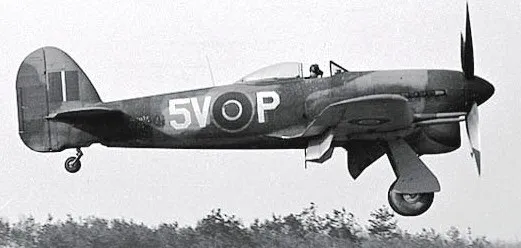Took off from Martlesham Heath at 12:30 in Typhoon Mark Ib (Sqn code: U Fighter Command).
Attacked target West of Embray, but had to brake off attack when his starboard guns jammed. Baled out at 1,000 feet.
Landed in a clearing in a small wood West of Hucqueliers and hid in another wood nearby. At dusk he began walking in a South-Easterly direction, picked up a jacket from a scarecrow, and about 21.00 hours, he reached the outskirts of Avesnes. He was given food, a hat and a pitchfork and guided to a crossroads East of Maningham, then walked to Radingham. He later approached a man near Matrunghem, given a meal and then taken to a woman and was given clothes. Moved to Renty on 1944-01-06, although the Gestapo raided the house he has hiding in, there was a warning given and he hid in nearby fields.. Later he moved to Verchin, then on 10 March to Fauquembergues, from where the rest of the journey was arranged
Those who dared - A Comprehensive List of World War ll Allied Escapers


